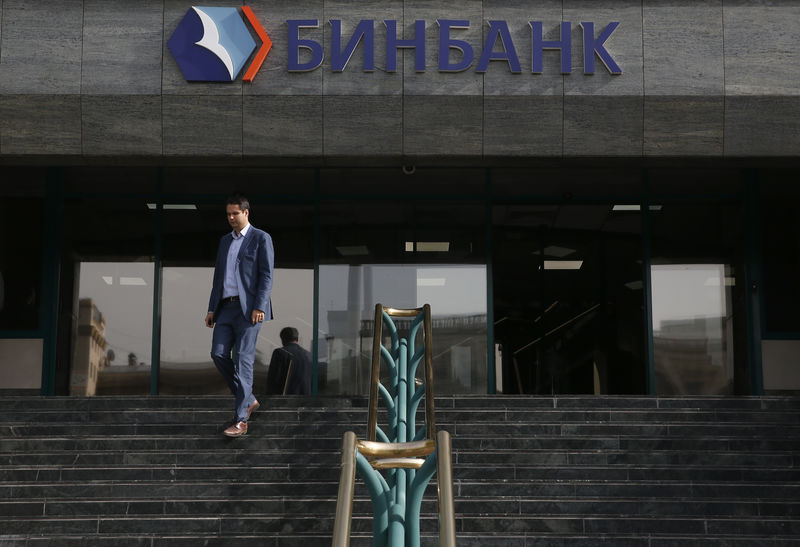By Polina Devitt and Christian Lowe
MOSCOW (Reuters) - Russia's central bank agreed to rescue B&N Bank on Thursday by injecting extra capital and becoming the main investor in the troubled lender and its affiliated banks.
B&N Bank, Russia's 12th biggest lender by assets, said on Wednesday it had requested a rescue because problem assets on its books were too great for it to handle.
The second major Russian bank bailout in a month has raised fresh questions about supervision and the stability of a banking sector buffeted by an economic downturn and Western sanctions.
Russia's central bank said in a statement it will use money from its Fund for the Consolidation of the Banking Sector to improve B&N Bank's financial stability.
"It is planned that the Bank of Russia will participate as the main investor," it said, adding that it would not use a so-called bail-in of B&N Bank's creditors for the rescue.
The rescue package would apply to B&N Bank, affiliated lender Rost Bank, and other banks in the group, it said. It did not disclose the size of the capital shortfall, or how much cash would be required for the bailout.
The central bank took over Otkritie Bank, Russia's largest private lender, last month and said it may need up to $6.9 billion, the biggest ever bailout in the country.
The bailout outlined for B&N Bank appeared to closely mirror the rescue underway for Otkritie. Banking sector insiders say the Otkritie plan has so far been effective, shoring up the bank and limiting the risks of a domino effect.
However, Russian financial sector stocks fell for a second day on Thursday, with the composite financial sector stock index (MICEXFNL) down 0.2 percent to 7,373 at 0717 GMT, underperforming the benchmark rouble-traded MICEX index.<.MCX.>
"NO NEED TO WORRY"
The chairman of B&N Bank's management board, Yevgeny Davydovich, welcomed the central bank rescue package. "There are no grounds for our clients to worry," he said in a statement.
"We have enough funds to meet all our obligations," he said, adding that the bank was functioning as normal. Branch opening had been extended by two hours each day so that customers could come in and ask questions or carry out transactions.
Russian banks were already under stress from an economic slowdown made worse by Western sanctions. They have seen bad debts rise over the past three years.
The financial health of some worsened after the central bank forced them to make more rigorous provisions for non-performing loans, while margins have tightened due to lower interest rates.
The market sees the banking sector's problems as contained to a few mid-sized private banks which have problems not shared by the wider banking industry.
Most of the Russian banking sector's assets are in the hands of state-run banks which are much more solid and not at immediate risk, analysts and market insiders said.
B&N Bank is part of a holding company controlled by Russian oligarch Mikhail Gutseriev and his family which includes oil firms, a property portfolio and an electronics retailer.
The bank embarked on an expansion drive after 2010, buying several smaller lenders before completing its biggest deal in 2016, a merger with MDM Bank, one of Russia's largest lenders.

But the bank's managers said this week they had underestimated the scale of the problem assets on the books of the newly-acquired banks, forcing them to seek help.